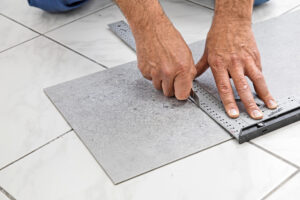- 2 min reading time
What does ‘low-emission’ mean in relation to floor coverings?
When purchasing floor coverings, the term ‘low-emission’ often comes up – especially in connection with healthy living, sustainable renovation or environmental certifications. But what exactly does it mean? And why is it important for our homes?
In this article, we explain what ‘low-emission’ means, what to look for when choosing flooring, and how floor coverings can help improve indoor air quality in the long term.
What are emissions from floor coverings?
Floor coverings consist of various materials, adhesives, backing layers or coatings. Some of these components can release volatile organic compounds (VOCs) into the indoor air. These include formaldehyde, toluene and plasticisers. They are not only produced during manufacture, but can also continue to evaporate for a long time after installation – in some cases even for years.
These substances are not always dangerous, but in high concentrations they can pollute the indoor air and cause irritation, headaches or allergies in sensitive individuals. This is particularly problematic in bedrooms, children's rooms or other sensitive areas.
What exactly does ‘low emissions’ mean?
‘Low-emission’ refers to products that emit only very small amounts of VOCs and therefore have little or no impact on indoor air quality. Classification is usually based on standardised test procedures and is documented with seals or certificates.
Recognised labels include:
- "Blauer Engel" (Blue Angel)
- eco-INSTITUT
- EMICODE EC1 oder EC1PLUS
- Eurofins Indoor Air Comfort
These certificates verify that a product falls below certain emission limits – some of which are significantly stricter than those required by law.
Why are low-emission floor coverings important?
Renovation and new construction projects involve the use of many new materials: paints, varnishes, adhesives, furniture, flooring. If all of these components emit pollutants, the concentration in the indoor air can increase – especially if ventilation is poor.
It therefore makes sense to choose low-emission products – in particular:
- for people with allergies or respiratory diseases
- in households with children or pets
- in well-insulated new buildings with low air circulation
Floors often make up the largest surface area in a room, so their emission values have a significant impact on the indoor climate.
What should you look out for when buying?
If you want to be on the safe side, you should:
- Look for certified test marks (e.g. Blue Angel, eco-INSTITUT).
- Prefer products without PVC, chlorine compounds or plasticisers
- If in doubt, obtain product information from the manufacturer.
Transparent declarations and verified data provide certainty – more than general advertising claims.
Low emissions and healthy living: CERAMIN as an example
CERAMIN is an example of a low-emission floor covering: the material is free of PVC and plasticisers, emits virtually no VOCs into the indoor air and has certifications such as the eco-INSTITUT label and the Blue Angel. This makes CERAMIN particularly suitable for people who want to ensure healthy living when renovating or building new homes – without compromising on modern design or everyday practicality.
Conclusion
‘Low emissions’ is not just an empty phrase, but a measurable quality feature that plays an important role in indoor air quality, health and well-being. Choosing flooring made from tested materials is an investment in a healthier home – long term and without significant additional expense.



